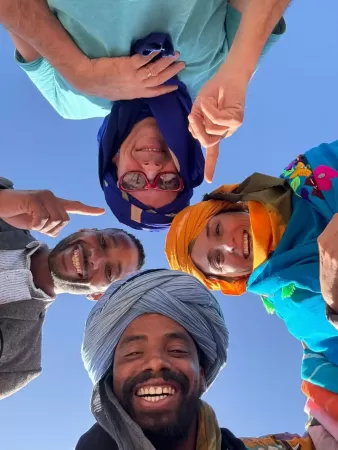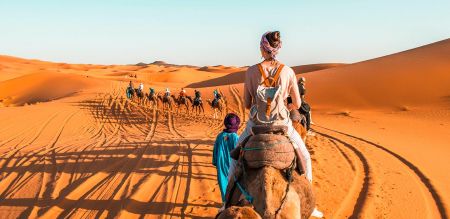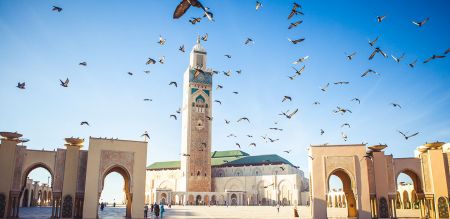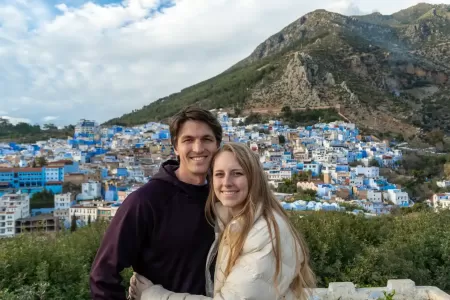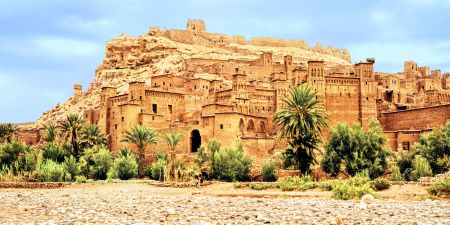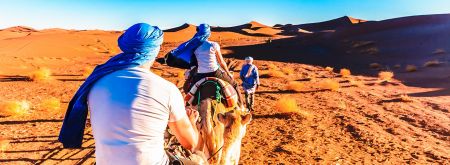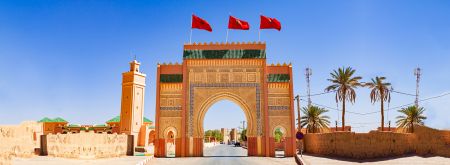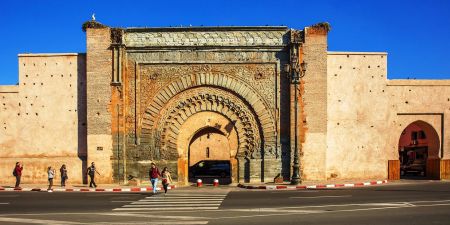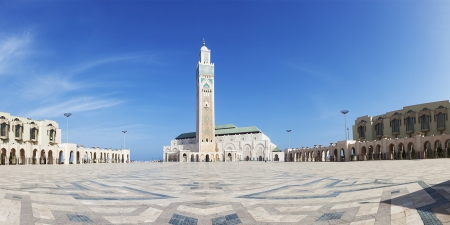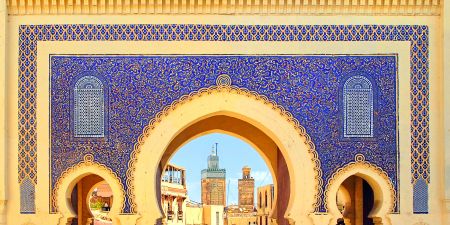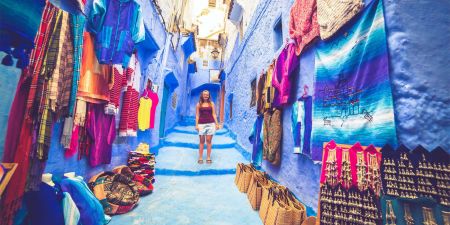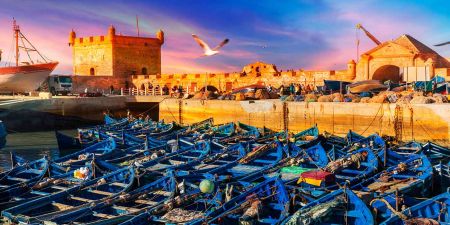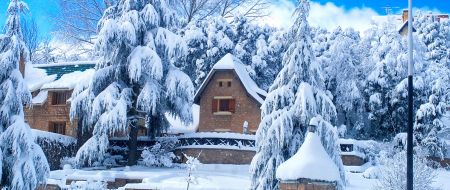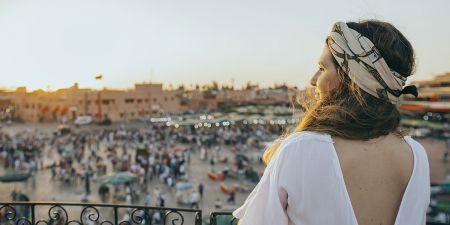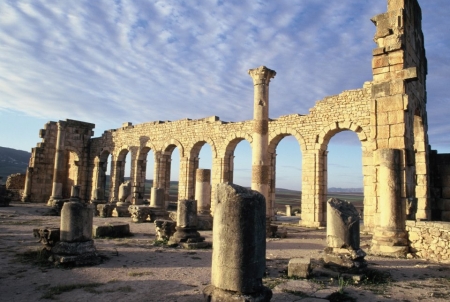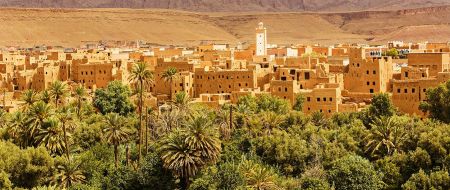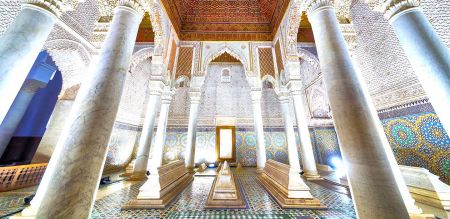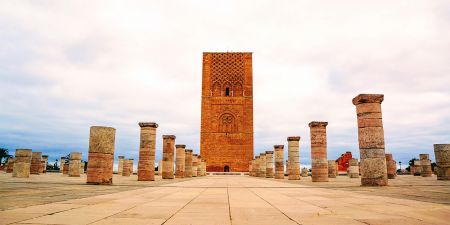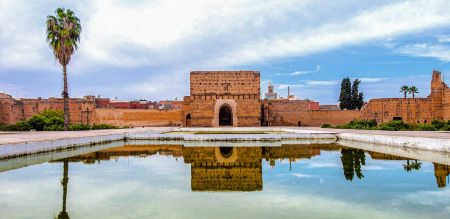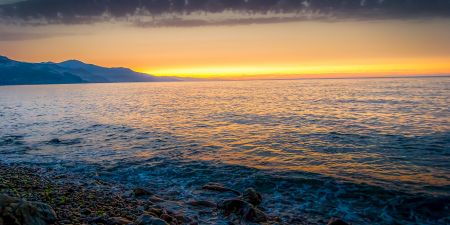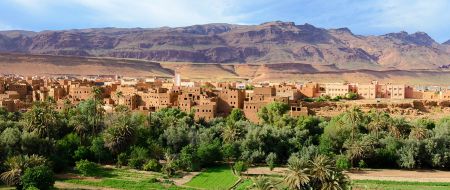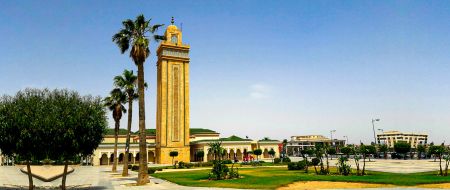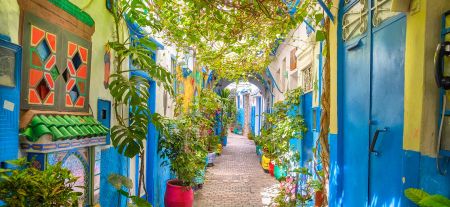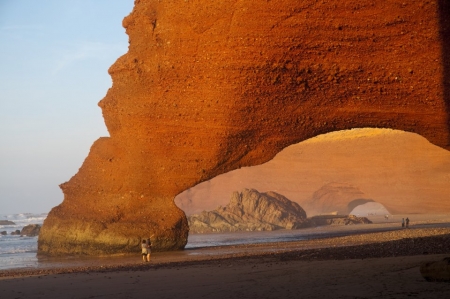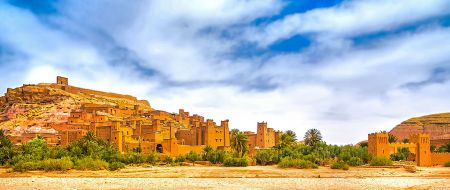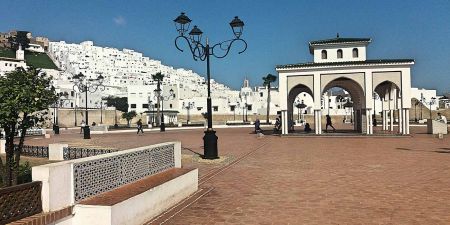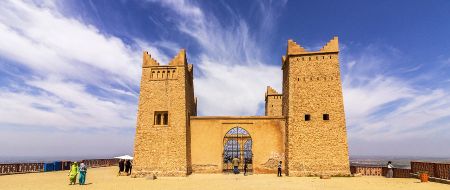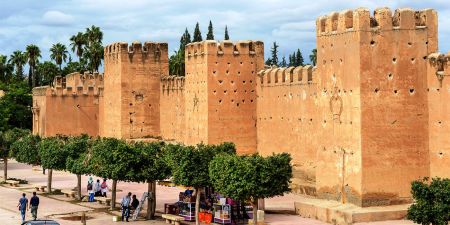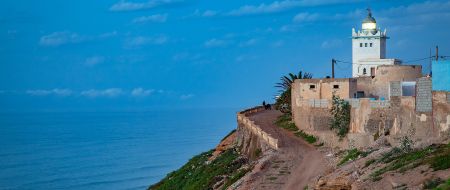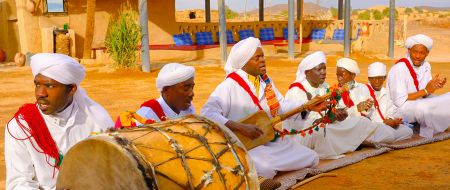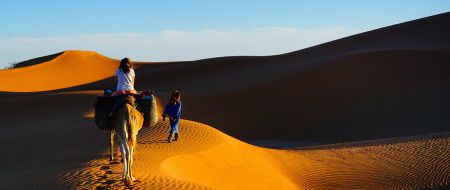Zagora Morocco Travel Guide: Essential Tips From Desert Experts
.jpg)
Zagora Morocco stands as a desert gateway where a famous sign once declared "Tombouctou 52 days" – marking the historical camel journey time to Timbuktu. Nestled in the Draa River valley at over 700 meters altitude, this town of 34,851 residents experiences dramatic temperature extremes, from scorching 44.9°C (112.8°F) summer days to frigid -10°C (14°F) winter nights.
When planning what to do in Zagora, Morocco, you'll discover it serves as the perfect base camp for unforgettable Sahara adventures. Whether you're exploring the vast Erg Chigaga dunes—one of Morocco's largest dune expanses—or wandering through lush date plantations nourished by Morocco's longest river, Zagora offers remarkable contrasts. Additionally, the region's vibrant culture comes alive during the Transaharan Film Festival in June and the Festival of Nomads in spring, where you can experience traditional Berber music, poetry, and thrilling camel races. This comprehensive guide will equip you with essential knowledge for navigating this fascinating desert outpost, from practical travel logistics to insider tips that ensure an authentic Moroccan experience.
At first glance, Zagora city might not seem like a place you would like to visit. Rather modern in appearance, it seems like a regional administrative center. Unlike Fez and Meknes, you will not find the historical architectural wonders. The name Zagora is derived from “Tazagort,” a mountain that lies by the shore of Draa Valley, overlooking the city.
Explore the Great Culture, History, and More in Morocco Travel Packages Now!
Standing at the edge of the Sahara Desert, Zagora Morocco, welcomes visitors with its iconic sign reading "Tombouctou 52 days" – a testament to its historical significance as a desert trading post. While summer temperatures soar to a scorching 44.9°C (112.8°F), this gateway town sits at an elevation of 700 meters, making it slightly cooler than its neighboring desert settlements.
As the last major stop before the vast Erg Chigaga dunes, Zagora offers you an authentic Saharan experience. From the bustling bi-weekly souk showcasing local crafts to the annual Transaharan Film Festival in June, this oasis town along the 1,100-kilometer Draa River presents countless opportunities for adventure. Whether you're planning to explore the surrounding date palms that produce over 30 varieties of dates or embark on a desert expedition, this guide will help you discover the best of what Zagora has to offer in 2025.
Zagora cannot be known for its major architectural monuments, even though it dates back to the 13th century. However, Zagora remains an interesting spot to discover the southeastern part of Morocco.
Plan and Tailor the Best Morocco Experience from Morocco Tours Now!
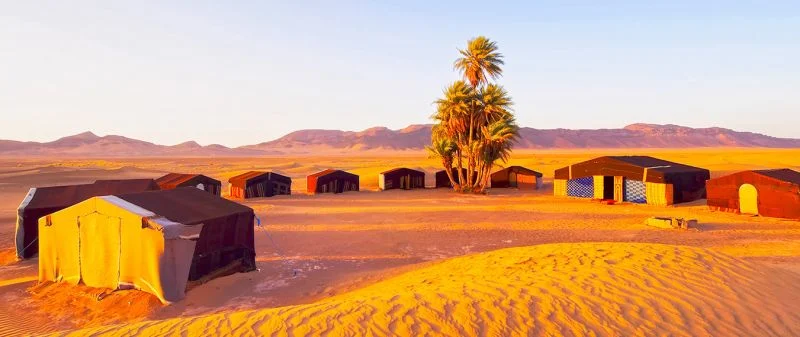
Location of Zagora
The city is located in the region of Souss-Massa-Drâa in southern Morocco. It lies on the slopes of the black sugar loaf hill that is called Jbel Zagora and is surrounded by some beautiful Kasbahs. The city’s population is 65,000, and it borders Ouarzazate to the north, Errachidia to the east, Tata to the southwest, and by the Algerian-Moroccan to the southeast.
Best times to visit for weather and festivals
The ideal time to experience Zagora is specifically during the cooler months from October to April, when temperatures become more moderate and comfortable for desert exploration. In particular, the spring months (March to May) offer a unique opportunity to see the desert at its most picturesque, with wildflowers in bloom.
For the most pleasant weather conditions, plan your trip during Spring or Autumn. As a result of extreme temperature variations, summer visits can be challenging with scorching daytime heat, while winter nights can be surprisingly cold in the desert.
History and Importance of Zagora
The old name of the city was Draa, after the valley of Draa. By the twentieth century, the city was renamed “Zagora.” 17 Saadyin emperors governed Morocco between the period of 1554 and 1659. Sultan Ahmed El Mansour (1578-1603) paid attention to the city. He established it as a customs point for camel caravans making round trips to and from Tombouctou.
Back to the sixteenth century, Zagoras played an important role in Morocco’s trade during the Saadyin reign, as trade caravans passed the Draa Valley when coming from the sub-Saharan regions. Besides, the strategic position of the valley has become a medium to collect legal fees generated by the trade.
Things to know in Zagora
There are a variety of things to do in Zagora. The multi-ethnic population of the city contributed to its diversity. It is a combination of the African-Arabian civilizations. Visitors can enjoy the beautiful region starting from the splendid Sahara to getting introduced to the culture of the city. Reddish-colored mountains, oases, wadis, and the huge sand dunes of the region are also a pleasure to the eye. Furthermore, Zagora is a gold mine for art-decor, cinema, and architecture lovers.
The city is surrounded by endless palm groves of the Drâa Valley, which has one of the most breathtaking desert landscapes. The desert offers peace, holiness, and purity.
Explore the Great Culture, History, and more in Now!
What to Do in Zagora Morocco
The ancient desert gateway of Zagora offers captivating experiences for every traveler. From nomadic adventures to cultural immersion, here are the must-try activities in this enchanting Moroccan outpost.
Take a camel trek into the Sahara
Nothing captures the essence of Zagora quite like a traditional camel trek across golden sands. The most magical time for this iconic desert experience is during sunset, when the dunes come alive with breathtaking colors. You'll sway atop your dromedary companion while taking in spectacular scenery, including palm trees, desert sands, and the majestic Bani mountain chain in the background.
Your trek can last anywhere from one hour to multiple days, depending on your preference. For an authentic experience, many tours include stops at desert oases and opportunities to learn how local Berbers prepare delicious meals, including fresh bread baked in the sand.
Join a 4WD tour to Erg Chigaga dunes
For adrenaline seekers, a 4WD expedition to the magnificent Erg Chigaga dunes is essential. These massive sand formations stand an impressive 300 meters high, making them the most extensive dunes in Morocco. Most tours depart from Zagora around 10:00 AM, though flexible timing is usually available.
As you journey through varied landscapes, you'll encounter breathtaking panoramas, traditional Berber villages, and possibly even wildlife such as camel herds, goats, and occasionally gazelles. Many excursions include visits to the famous green pottery workshops in Tamegrout and stops at natural water sources before reaching the majestic dunes.
Visit the Musée des Arts et Traditions
This fascinating small museum offers an intimate glimpse into traditional life in the Draa Valley. Spread across three floors, it houses an impressive collection of tribal jewelry, wedding garments, and unique artifacts like tea glasses reportedly designed to shatter upon contact with poison.
The museum costs just 25 dirhams to enter and features excellent explanations in both French and English. Located in a traditional house within an ancient kasbah, its authentic setting enhances the cultural experience as you learn about Berber traditions and the agricultural practices of the region.
Enjoy a night in a desert bivouac
Sleeping under the Saharan stars represents the pinnacle of desert experiences. Bivouac camps range from standard tents to luxury accommodations with en-suite bathrooms and hot showers powered by solar panels. The Chegaga Luxury Camp offers spacious nomad-style buildings with comfortable bedding and traditional Moroccan décor.
After sunset, gather around a campfire for traditional music while enjoying delicious Moroccan cuisine prepared from organic ingredients. The absolute silence of the night desert combined with the spectacular starry sky creates an unforgettable experience impossible to replicate in urban environments.
Stroll through the palm groves of Amezrou
Just 3 kilometers southeast of Zagora lies the historic ksar of Amezrou, a well-preserved 18th-century fortified village. As you wander through its lush palm groves, you'll discover a fascinating contrast between the ocher mountain backdrop and the verdant oasis.
Take time to visit the small synagogue, a testament to when Amezrou was home to a significant Jewish community. Furthermore, observe local silversmiths creating handcrafted jewelry adorned with traditional Berber and African motifs—a specialty craft of this ancient ksar.
Hidden Gems Around Zagora
Beyond the popular tourist spots, Zagora conceals extraordinary treasures that most travelers miss. These hidden gems offer glimpses into centuries of rich history, traditional craftsmanship, and breathtaking natural beauty.
Discover the ancient Jewish Kasbah in Amezrou
Just footsteps from Zagora lies the remarkable 12th-century fortress known as the "Jewish kasbah" in Amezrou. This historic site once housed a thriving Jewish community that lived harmoniously with local Muslims for centuries until they largely migrated to Israel around 1958.
The kasbah features distinctive architecture with narrow winding alleyways and high walls. Notably, it had two separate entrances—the west door used by Jews and the east door by Muslims. Inside, you'll find one of the best-preserved synagogues in the Draa Valley.
The Jewish community controlled the silver trade along this former caravan route, and although they've departed, their craftsmanship legacy continues. Visit the silversmiths' workshops where Berber Muslims, trained by Jewish artisans, still create traditional designs using techniques passed down through generations.
Explore the green pottery of Tamegroute
About 18 kilometers from Zagora, Tamegroute village harbors an extraordinary ceramic tradition that dates back to the mid-1600s. The village's distinctive green-glazed pottery is truly one-of-a-kind—its unique color comes from a secret formula passed down exclusively from father to son for centuries.
The remarkable glazing process involves a special mixture containing manganese, silica, cobalt, copper, and barley flour. Consequently, this creates a vibrant green hue impossible to replicate anywhere else in the world.
Only seven families in Tamegroute produce this pottery, using clay dug from deep holes near the Draa River and firing their creations in traditional wood-burning kilns. Visit the workshops to witness artisans still using manually operated pottery wheels and ancient techniques.
Watch the sunset from the cliffs of Jebel Zagora
For breathtaking panoramic views, hike up Jebel Zagora mountain on the southeastern outskirts of the city. This moderately challenging climb rewards your effort with magnificent vistas overlooking the entire region—the town, surrounding palm groves, and distant desert landscapes.
Begin your ascent early morning to catch sunrise or late afternoon for sunset views. The terrain starts rocky but becomes sandier as you climb higher. Even if you don't reach the very top, the journey offers spectacular viewpoints to observe the sun sinking into the horizon, illuminating the valley below in golden light.
Customize Your Dream Vacation!
Get in touch with our local experts for an unforgettable journey.
Plan Your TripEssential Travel Logistics
Planning your desert adventure requires logistical knowledge about reaching and navigating Zagora Morocco. These essential travel details will help you maximize your desert experience.
How to reach Zagora from Marrakech or Ouarzazate
Getting to Zagora primarily involves road travel from major Moroccan cities. From Marrakech, direct busses operate twice daily, with the journey taking approximately 7 hours and costing between €14-20. Alternatively, you can drive yourself, which takes about 6 hours and 14 minutes.
From Ouarzazate, the journey is substantially shorter. CTM buses run three times daily (05:35, 16:00, and 16:30), taking approximately 3-3¼ hours and costing 55 dirham. For more flexibility, collective taxis are available, taking about 2 hours once filled and costing 50-70 dirham. Moreover, self-driving from Ouarzazate takes roughly 2 hours and 54 minutes.
Navigating the town: taxis, walking, and tours
Zagora is relatively compact, spanning approximately 5km in length and 1km at its widest point. This makes the town quite walkable for exploring local attractions. For longer distances, petit taxis are readily available throughout Zagora, costing merely 3 dirham per person when shared.
Most desert tours and excursions can be arranged through your accommodation. Subsequently, these tours typically provide transportation to and from major attractions in the region.
Expert Tips for a Smooth Trip
Mastering cultural nuances and local customs will turn your Zagora adventure from merely memorable to truly extraordinary. These expert insights ensure you'll navigate this desert region with confidence and respect.
Cultural etiquette and dress code
Modesty matters throughout Morocco, especially in Zagora's more traditional setting. Both men and women should cover their shoulders and knees, with loose-fitting, breathable fabrics being ideal for the desert climate. Women may consider carrying a scarf to cover their heads when visiting religious sites. Remember, while tourists aren't expected to dress exactly like locals, respectful attire helps avoid unwanted attention.
When entering Moroccan homes, remove your shoes and wash your hands when offered water for this purpose. Indeed, eating is done with the right hand only, using bread instead of utlery in traditional settings.
What to expect during Ramadan
Ramadan transforms daily rhythms in Zagora. Since it's illegal for Moroccan Muslims to eat or drink publicly during daylight hours, be discreet if you must eat during the day. Fortunately, hotels and tourist restaurants typically remain open, albeit with reduced staff.
Post-sunset, streets come alive with celebration as families break their fast. This provides a unique opportunity to experience authentic cultural festivities firsthand.
Tips for haggling in the souk
Bargaining is an essential cultural dance in Zagora's markets. To haggle effectively:
- Start by offering approximately 50% of the initial asking price
- Act somewhat disinterested in items you truly want
- Be willing to walk away (often the vendor will call you back with a better price)
- Purchase multiple items from one vendor for better overall pricing
Zagora truly stands as a remarkable gateway to Saharan adventures, offering experiences that connect you with centuries of desert tradition. Throughout your journey, you'll discover the perfect blend of natural wonders and cultural richness that makes this region extraordinary. From swaying atop camels across golden dunes to sleeping under spectacular star-filled skies, these moments create memories that last long after your return home.
Undoubtedly, timing your visit during spring or fall ensures the most pleasant climate conditions for desert exploration. Although summer brings intense heat and winter delivers surprisingly cold nights, each season reveals different facets of Zagora's character. Furthermore, planning ahead for cultural differences, particularly regarding modest dress and respectful interaction, enriches your experience through meaningful connections with local communities.
Whether you choose luxury accommodations or authentic bivouac camping, Zagora rewards travelers who venture beyond Morocco's more familiar destinations. The ancient kasbahs, unique green pottery, and majestic dunes all tell stories of a land where traditional ways still thrive alongside modern conveniences. Finally, as you watch the sunset paint the vast desert landscape in golden hues, you'll understand why travelers have been drawn to this magical corner of Morocco for centuries.
FAQs
Q1. What are the must-do activities in Zagora, Morocco?
The top activities in Zagora include taking a camel trek into the Sahara, joining a 4WD tour to Erg Chigaga dunes, visiting the Musée des Arts et Traditions, enjoying a night in a desert bivouac, and strolling through the palm groves of Amezrou.
Q2. How can I reach Zagora from major Moroccan cities?
From Marrakech, you can take a direct bus (7 hours) or drive (6 hours 14 minutes). From Ouarzazate, options include CTM buses (3-3¼ hours), collective taxis (2 hours), or self-driving (2 hours 54 minutes).
Q3. What's the best time to visit Zagora?
The ideal time to visit Zagora is from October to April, when temperatures are more moderate. Spring (March to May) is particularly beautiful with wildflowers in bloom, offering pleasant weather for desert exploration.
Q4. Are there any unique cultural experiences in Zagora?
Yes, you can explore the ancient Jewish Kasbah in Amezrou, witness the creation of unique green pottery in Tamegroute, and participate in traditional festivals like the Trans-Saharan Film Festival in June or the Festival of Nomads in spring.
Q5. What should I know about cultural etiquette in Zagora?
Dress modestly, covering shoulders and knees. When entering homes, remove shoes and wash hands if offered water. During Ramadan, be discreet if eating during daylight hours. In markets, haggling is expected - start at about 50% of the asking price and be prepared to negotiate.

